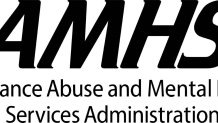

The following content is created in partnership with the Substance Abuse and Mental Health Services Administration (SAMHSA). It does not reflect the work or opinions of NBC Washington’s editorial staff. Click here to learn more about SAMHSA.
Suicide is the second leading cause of death for American youth ages 10–24. More teenagers and young adults die from suicide than from cancer, heart disease, AIDS, birth defects, stroke, pneumonia, influenza, and chronic lung disease combined. Suicidal thoughts and actions can happen in any family at any time—so, it is important to know the risk factors, recognize the warning signs and offer the right help at the right time. You really can make a difference in saving a life!
Know the Risk Factors
Adolescence is a stressful developmental period that can feel overwhelming, especially when compounded by risk factors such as trouble in school or a loss in the family. Other risk factors include:
We're making it easier for you to find stories that matter with our new newsletter — The 4Front. Sign up here and get news that is important for you to your inbox.
- Family disruptions or conflicts
- Physical/sexual abuse
- Exposure to the suicide of a family member or friend
- Family history of mood disorder or suicidal behavior
- Mental illness/psychiatric diagnosis
- Social isolation/ bullying
- Difficulties in dealing with sexual orientation
Be Alert to Warning Signs
Statistics show that four of five teens who attempt suicide give clear warning signs. Watch for "out of character" behavior and signals such as:
- Talking about or making plans for suicide
- Expressing hopelessness about the future
- Displaying severe/overwhelming emotional pain or distress
- Showing worrisome behavioral cues or marked changes in behavior, particularly in the presence of the warning signs above. Specifically, this includes significant:
- Withdrawal from or changing in social connections/situations
- Changes in sleep (increased or decreased)
- Anger or hostility that seems out of character or out of context
- Recent increased agitation or irritability
Be Proactive in Offering Help
If you notice behaviors that concern you, don’t hesitate to ask questions and/or seek help. Here are some steps you can take.
- Believe a young person when they say that they are anxious, depressed, abused, bullied or lonely
- It’s proven that talking about suicide with a suicidal person doesn't entice, provoke or introduce the idea, but actually deters a person from going through with it. For instance, you might ask directly, "I've noticed that you've been talking a lot about wanting to be dead. Are you thinking about killing yourself?”
- Take away guns, ropes, medication and other means of self-harm
- Talk about a young person’s strengths to get their emotions under control and identify reasons to engage in life to connect them to a larger sense of purpose and value.
- Consult a professional as soon as possible
On Monday, May 6, 2019 at 3:00 p.m. EDT, the Substance Abuse and Mental Health Services Administration (SAMHSA) will be hosting a National Children’s Mental Health Awareness Day Event. You can tune in to the live event on hhs.gov/live. If you know a young person who is at risk of suicide, reach out to SAMHSA's National Suicide Prevention Lifeline 24/7, 365 days a year by calling 1-800-273- TALK (8255).

